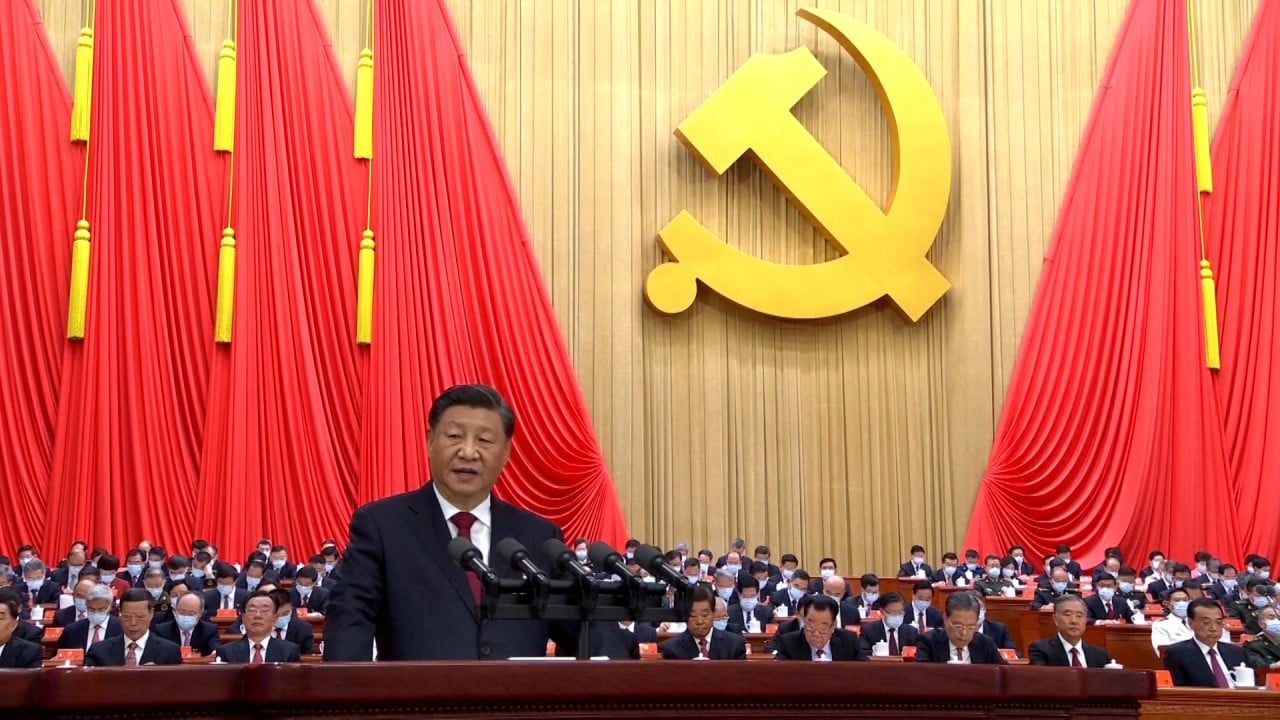
Xi Jinping’s drive for China’s high-quality development faces population, social capital balancing act
- President Xi Jinping emphasised ‘green development’, greater self-reliance and strength in science and technology during Sunday’s work report to the 20th party congress
- Xi did concede ‘imbalances and inadequacies’ and ‘wide gaps in development and income distribution between urban and rural areas and between regions’
A lack of social capital and an ageing population could widen the growth gap between rural areas and more developed regions in the coming years, challenging China’s renewed push for “high-quality development”, according to analysts.
This will, according to Xi, ensure China’s gross domestic product (GDP) per capita will reach that of a “medium-level developed country” by 2035.
China previously included a goal to lift itself into a “high income” nation by 2025 and advance to a “moderately developed” nation by 2035, which implies income of more than US$20,000 per person.
Apart from the GDP indicator, there are also employment and industry trends [when it comes to evaluating economic performance]
“Apart from the GDP indicator, there are also employment and industry trends [when it comes to evaluating economic performance],” said Banny Lam, managing director and head of research at China Everbright Bank International Investment in Hong Kong.
Lam believes China’s economic planning will be increasingly more targeted after years of focusing on rapid growth, which has become hard to sustain.
“It is going to be about an all-round development,” he added.
High-quality development has been among the top priorities for Beijing over the past few years as China seeks to upgrade its industries amid rising competition with the United States in the area of advanced technology.
But Xi’s report also highlighted that “the imbalances and inadequacies in development remain a prominent problem”, adding that there are “still wide gaps in development and income distribution between urban and rural areas and between regions”.
Smaller local governments in China are already struggling to upgrade their industries, according to reports filed by regional officials this year.
Pengyang County, with a population of just 160,000 in the Ningxia Hui autonomous region, cited a lack of human resources and social capital to achieve high-quality development after years of relying on coal mining as its growth engine.
“At present, the county as a whole, [we] lack the participation of leading enterprises,” the county government said in April.
“The amount of land suitable for development is very limited, and the development level and the capacity of industrialisation and urbanisation are also limited to a certain extent.”
But what we view as important, and as necessary is the revenue growth. And we have yet to identify whether it’s a chicken that can lay eggs
Yichuan County in the northern Shaanxi province said a plunging labour force and ageing population have affected the quality of the management of its agricultural industries, while it has failed to develop new industries due to a lack of resources.
“Right now, new energy is the mainstream industry trend,” the county said in May.
“It has driven up fixed investment growth to a certain extent. But what we view as important, and as necessary is the revenue growth. And we have yet to identify whether it’s a chicken that can lay eggs.”
China’s less economically advantageous regions may face the problem of net resident outflows over an extended period, according to analysts at Fitch Ratings, which could pressure their revenues and hurt growth prospects.
Xi says China must brace for ‘dangerous storms’, as party congress kicks off
“Low-tier cities that are less attractive to migrants could see outflows, especially those in economically weaker regions where social amenities are often less evenly distributed,” Fitch said last week.
“We believe this could dampen local and regional governments’ revenue by inhibiting economic growth and, in turn, pressuring their tax base and lowering the realisable value of their state-owned capital, including land concessions.”
Jacob Gunter, a senior analyst with the Mercator Institute for China Studies, believes that there is a “fine number of options and resources” China can mobilise with Xi pursuing self-reliance in advanced technology, a strict zero-Covid strategy, while also having more control over the economy.
Analysts widely expect China will not be able to meet its 2022 economic growth target of “around 5.5 per cent” as a result of its strict coronavirus containment policy and a slump in the property market.
[Xi] is going to have to respond to what is effectively the rockiest economy that Beijing has faced in decades
“[Xi] is going to have to respond to what is effectively the rockiest economy that Beijing has faced in decades,’ Gunter said.
“GDP growth is much lower over time, under Xi and it’s become incredibly volatile over the last couple of years, because of the pandemic and China’s response to the pandemic.”
China set a target of its GDP per capita reaching that of a so-called medium-level developed country by 2035 in October 2020, although it never specified the exact threshold to achieve the target.
Larry Hu, chief China economist at Macquarie Group, believes the threshold could be doubling China’s GDP per capita of US$10,408.70 in 2020.
“Such a target requires an average annual growth rate of 4.7 per cent in 2021-35, arguably over 5 per cent between 2021 and 2025,” Hu said on Monday.
“It’s not an easy one, given the structural headwinds under way such as the property down-trend, the ageing population and the US-China tensions.
“If top leaders take the target seriously, they might have to adopt a more pro-growth policy stance in the coming years.”
French investment bank Natixis said earlier this week that economic growth is no longer China’s only key objective, with the process of how China can double its income in the coming years now of greater importance.
“Balanced growth is essential, but the reading should not be the good old ‘rebalancing’, understood as consumption being the most important growth engine.”


